Trees Birds Mammals Fish Amphibians Reptiles
Wild Algarve
Bookshop
Rhodocybe gemina (Paulet) Kuyper & Noordel. - Tan Pinkgill
Phylum: Basidiomycota - Class: Agaricomycetes - Order: Agaricales - Family: Entolomataceae
Distribution - Taxonomic History - Etymology - Identification - Culinary Notes - Reference Sources
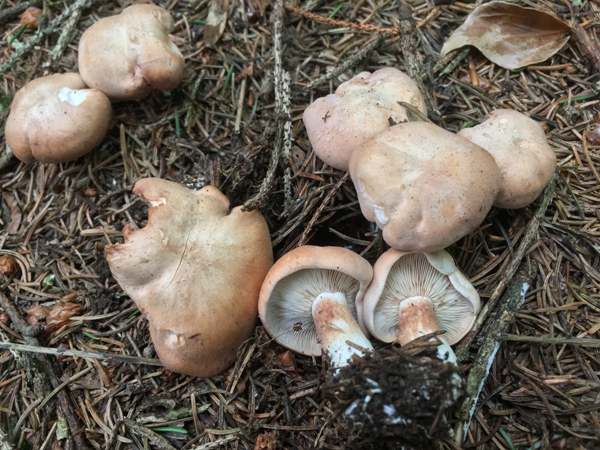
The robust stature of this rare (in Britain and Ireland, at least) mushroom is reminiscent of St George's Mushroom Calocybe gambosa or some of the stouter Tricholoma species.
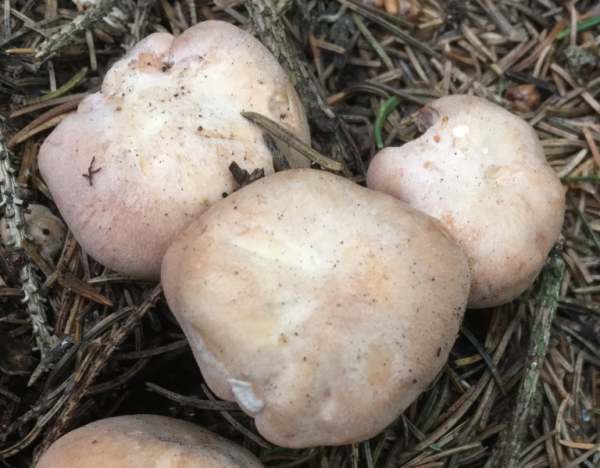
Distribution
This attractive mushroom is a rare and very localised find in Britain and Ireland, although it is quite widely but sparsely distributed across much of mainland Europe including Norway, Sweden, Germany, Holland and France.
Taxonomic history
When in 1793 French mycologist Jean-Jacques Paulet (1740 - 1826) described this species he gave it the scientific (binomial) name Hypophyllum geminum. Elias Magnus Fries sanctioned the specific epithet in 1838, remaning the species as Agaricus geminus. (In the early days of fungus taxonomy most of the gilled mushrooms were included initially in the genus Agaricus.) The scientific name Rhodocybe gemina dates from a 1987 publication by Dutch mycologists Thomas W. Kuyper (b. 1954) and Machiel Evert Noordeloos (b. 1949).
Synonyms of
Rhodocybe gemina include
Hypophyllum geminum Paulet,
Agaricus geminus (Paulet)
Fr.,
Tricholoma geminum (Paulet) S. Petersen, and
Clitopilus geminus (Paulet) Noordel. & Co-David. (The latter name is currently favoured by some authorities.)
Etymology
The generic name Rhodocybe comes from ancient Greek words Rhodeos-, meaning pinkish, and -cybe, meaning head (in this instance referring to the mushroom's cap).
The specific epithet gemina is Latin for paired - presumably a reference to the fact that these mushrooms are rarely seen as singletons (although they are certainly not limited to twins!).
Identification guide
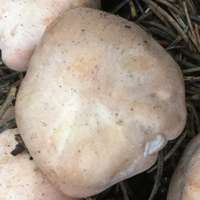 |
Cap
Ochre with pale pink tinges, turning more brown with age; 3 to 10cm across; initially convex, flattening with a shallow umbo but retaining a downturned or slightly inturned margin; not hygrophanous; matt, not viscid; the cap margin is not striate.
|
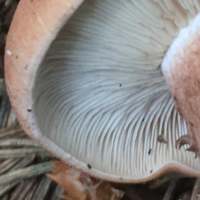 |
Gills
Fairly crowded, adnate/sinuate with a small decurrent tooth; very pale buff with a pink tinge.
Hymenial pseudocystidia: absent. Clamps: absent. |
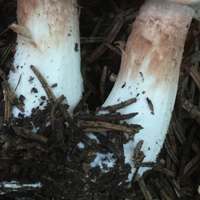 |
Stem
Cylindrical or slightly clavate at base; white and mealy near the apex then rose pink and fibrous, becoming white towards the base; 4 to 8cm long and 0.8 to 2cm in diameter; longitudinally fibrillose; no stem ring. |
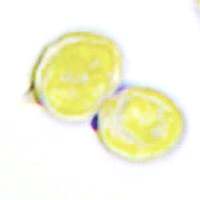 |
Spores
Isodiametrical (broadly ellipsoidal, angular), thin-walled with small irregular warts; 4.5-7 x 3-4.5μm.
Spore print
Flesh pink to salmon pink. |
Odour/taste |
Mealy odour (like wet flour) or fruity; oily/nutty taste. |
Habitat & Ecological role |
Saprobic, usually in groups, on soil in scrubby grassland and woodlands, often with Stinging Nettles. |
Season |
Fruiting late summer and autumn in Britain and Ireland. |
Similar species |
Entoloma clypeatum lacks the reddish tints on cap and stem and has much larger spores. |
Culinary Notes
Although reported to be edible, this is a rare find throughout most if not all of its range - sufficient reason, surely, for not collecting this species other than when necessary for research purposes.
Reference Sources
Rhodocybe gemina (Paulet) Kuyper & Noordel., Persoonia 13 (3): 379 (1987)
Flora agaricina neerlandica : critical monographs on families of agarics and boleti occurring in the Netherlands / 1, A, General part. B, Special part : 'Entolomataceae' by y Machiel Evert Noordeloos et al. (1988)
Dictionary of the Fungi; Paul M. Kirk, Paul F. Cannon, David W. Minter and J. A. Stalpers; CABI, 2008
Taxonomic history and synonym information on these pages is drawn from many sources but in particular from the British Mycological Society's GB Checklist of Fungi.
Acknowledgements
This page includes pictures kindly contributed by Simon Harding.
Top of page...
Fascinated by Fungi. Back by popular demand, Pat O'Reilly's best-selling 450-page hardback book is available now. The latest second edition was republished with a sparkling new cover design in September 2022 by Coch-y-Bonddu Books. Full details and copies are available from the publisher's online bookshop...